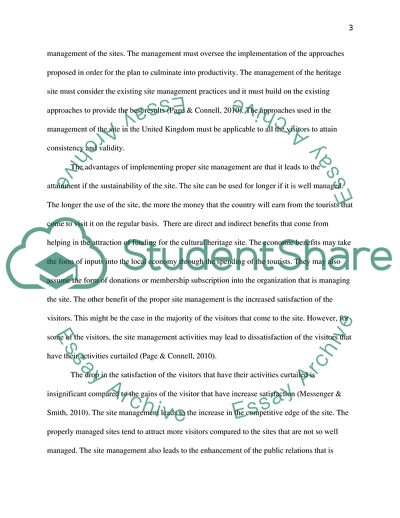Cite this document
(Cultural Heritage Sites Management Coursework Example | Topics and Well Written Essays - 2250 words, n.d.)
Cultural Heritage Sites Management Coursework Example | Topics and Well Written Essays - 2250 words. https://studentshare.org/tourism/1814477-title-using-academic-literature-and-examples-discuss-how-visitor-management-takes-place-at-cultural-heritage-sites
Cultural Heritage Sites Management Coursework Example | Topics and Well Written Essays - 2250 words. https://studentshare.org/tourism/1814477-title-using-academic-literature-and-examples-discuss-how-visitor-management-takes-place-at-cultural-heritage-sites
(Cultural Heritage Sites Management Coursework Example | Topics and Well Written Essays - 2250 Words)
Cultural Heritage Sites Management Coursework Example | Topics and Well Written Essays - 2250 Words. https://studentshare.org/tourism/1814477-title-using-academic-literature-and-examples-discuss-how-visitor-management-takes-place-at-cultural-heritage-sites.
Cultural Heritage Sites Management Coursework Example | Topics and Well Written Essays - 2250 Words. https://studentshare.org/tourism/1814477-title-using-academic-literature-and-examples-discuss-how-visitor-management-takes-place-at-cultural-heritage-sites.
“Cultural Heritage Sites Management Coursework Example | Topics and Well Written Essays - 2250 Words”. https://studentshare.org/tourism/1814477-title-using-academic-literature-and-examples-discuss-how-visitor-management-takes-place-at-cultural-heritage-sites.


